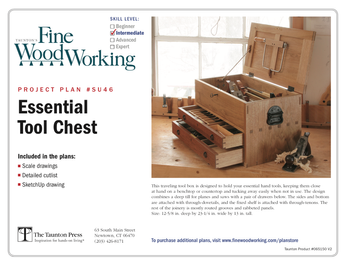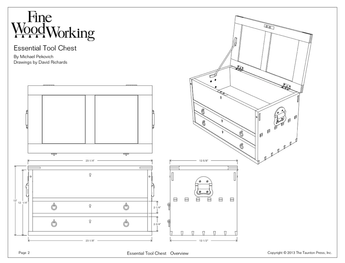Just wondering what you all though the best technique for cutting a table top square is. I am making a 20 inch by 68 inch top for a dresser. I am planing on using joining 4 8/4 cherry boards that will be about 5 inches wide to make the table top.
My question is how is the best way to get the ends of all the boards to line up flush once its glued together.
Discussion Forum
Get It All!
UNLIMITED Membership is like taking a master class in woodworking for less than $10 a month.
Start Your Free TrialCategories
Discussion Forum
Digital Plans Library
Member exclusive! – Plans for everyone – from beginners to experts – right at your fingertips.
Highlights
-
Shape Your Skills
when you sign up for our emails
This site is protected by reCAPTCHA and the Google Privacy Policy and Terms of Service apply. -
 Shop Talk Live Podcast
Shop Talk Live Podcast -
 Our favorite articles and videos
Our favorite articles and videos -
E-Learning Courses from Fine Woodworking
-
-
 Fine Woodworking New England Event
Fine Woodworking New England Event -












Replies
My first choice would be to cross cut to length on a sliding panel saw. The classic textbook way is to rough cut to length oversize by 1/8" after glue up and use a router and guide board to finish size it. There's no shortage of good books out there with basic techniques.
Assuming your boards are slightly longer than the final length of top, you have several options:
- use a circular saw guided by a straight board or other form of guide
- use a router with a straight bit and a straight edge of some sort clamped to the board as guide
- use a handsaw and clean up the edge with a plane or sander
- combinations of all three of the foregoing (e.g., cleanup the saw cuts with a router bit etc)
All would work fine and are realtively simple.
Edited 2/2/2007 5:15 pm ET by Samson
Samson
Yeah i was leaning towards the Router with a strait edge system. Just wondering if there was a better way with the limited tool selection that is available to me.
The router will work fine. A few thoughts:
- make yourself a jig to ensure the guide board is held square on both sides (not just a T but an I so to speak)
- consider making the jig have a guide on both sides so that with an 8/4 plank you could work from both sides of the top and meet at the middle
- of course, take several passes - a little wood at a time (obvious, but just in case)
I actually already have a jig that I use to cut tennons on the end of boards that are all the same length. Its basically two 4 inch by 4 foot pieces of 3/4 Birch ply that I can tighten in multiple spots with wing nuts and some all thread. Once I get it at a right angle to the edge of the wood I can square the upper and lower pieced so that they are in the same verticle plane allowing me to work from both sides of the boards without reseting the jig.. Hope you can visualize this.
Sounds perfect. Good luck.
Whisky, I am visualising that and it feels painful (;)
Since that is a smallish and narrow top I would have glued it up an inch or so over-size in length, having aligned the ends by eye, then whacked off the ends square to the front or back edge which I had jointed just before using my radial arm saw to cut the ends.That would leave virtually no clean up to do with a hand plane.
Another option for a relatively light top would be to cut the ends square using a band saw, then clean up with hand plane or jointer.
I would prefer to do it by hand saw or portable jig saw and clean up with hand plane over dicking about with jigs and things . Using a router to clean up when the top is big and heavy is a useful option-especially if there are several tops to do-but so is a handplane like a #51/2 or #7.Philip Marcou
This forum post is now archived. Commenting has been disabled